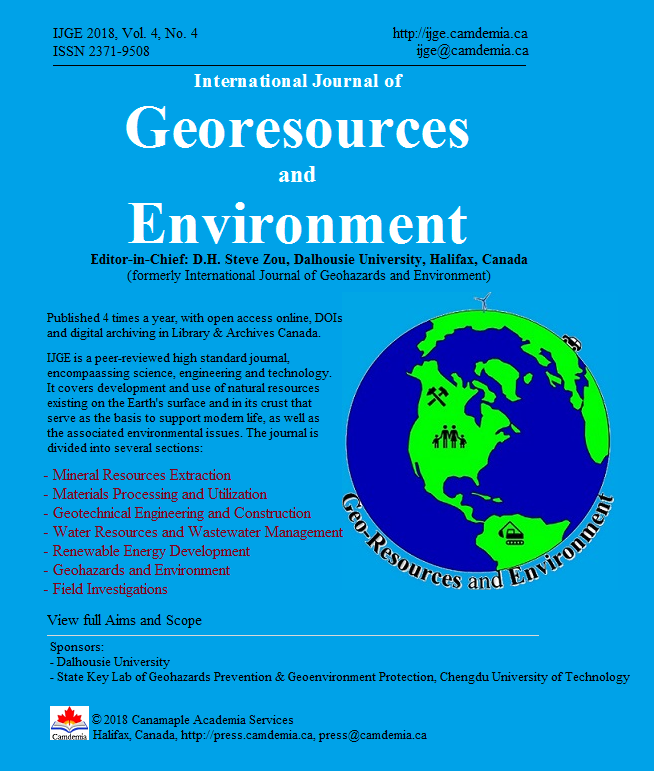Geological Hazards During Construction and Operation of Shallow Subway Stations and Tunnels by the Example of the Kharkiv Metro (1968–2018)
DOI:
https://doi.org/10.15273/ijge.2018.04.030Keywords:
underground, shallow tunnels, complex conditions, weak soils, accidentsAbstract
Scientific, technical and practical problems have been considered in relation to geological hazards during construction and operation of metro objects such as shallow subway stations and tunnels. Analysis of five decades of the experience of construction and subsequent operation of the Kharkiv metro in rough engineering and geological conditions by construction of tunnels at shallow depths under the existing urban development allowed detecting and systematizing a set of the most essential adverse conditions, processes and phenomena. The main geological hazards are related to the expansion of quicksands, possibility of “flotation” of the underground structures, barrage effect, subsidence of the soil body by long-term dewatering, undermining of the built-in territories and difficulties by tunneling in technogenic fill-up grounds when crossing ravines and gullies. Most problems occur in the territories with a high groundwater level: geological risks in these areas increase, and serious incidents occur by sudden adverse changes of hydrodynamic conditions. Zones of high, medium and low geological hazards have been identified. Geological hazards have been defined at the section planned for extension of the metro line, for which calculations of the affluent value were made based on the barrage effect of tunnels on the groundwater flow. Taking into account the possibility of emergence of engineering and geological processes and prevention of their development provides safe and reliable construction and operation of shallow metro systems. The obtained results of evaluation of geological hazards can be used by designing and construction of underground objects in similar conditions.
Downloads
Published
Issue
Section
License
Copyright, Terms and Conditions
The International Journal of Geohazards and Environment (the Journal) is published by Canamaple Academia Services (the Publisher) online with open access, under a Creative Commons Attribution-Noncommercial license (CC-BY-NC) (http://creativecommons.org/licenses/by-nc/4.0/). Authors (the Authors) submitting papers (the Work) for publication in the Journal automatically agree to the following terms and conditions.
1. Under the license (CC-BY-NC), Authors give permission for others to share and reuse the Work, as long as the original source and author(s) are properly cited (i.e. a complete bibliographic citation and link to the Journal website) and the material is not used for commercial purposes. Any sharing or reuse must however indicate the original CC-BY-NC license terms of the work.
2. Authors transfer and assign to the Publisher all copyright in and to the Work. However Authors retain all proprietary rights except the copyright, related to the Work and also retain the rights a) to use, reproduce, distribute, and publicly display the Work in any medium in connection with the Authors‘ academic and professional activities, such as teaching, presentations and lectures, b) to create derivative works from the Work and to make full use of the Work in future research and publications, c) to authorize others to make any non-commercial use of the Work, d) to make both the pre-published and final-published versions available online in institutional and/or disciplinary repositories or on their own websites with a citation and link to the original paper published in the Journal.
3. Authors warrant that the Work is their original work, it is not copied from anywhere or anyone else, they are totally responsible for the authenticity, originality, validity and accuracy, and the facts and views are their own, that the Work contains no matter which is defamatory or infringes any literary or proprietary rights, intellectual property rights, or any rights of privacy, and that the Work has not been simultaneously submitted to any other journals or publishers. Authors further agree that their manuscripts whether accepted or rejected will not be returned and the rejected manuscripts will be disposed at the journal editor's discretion.
Disclaimer: The Publisher, the Journal and the editors accept no responsibility for statements or opinions expressed by authors. Use of information and materials in the Journal is the sole responsibility of users.


